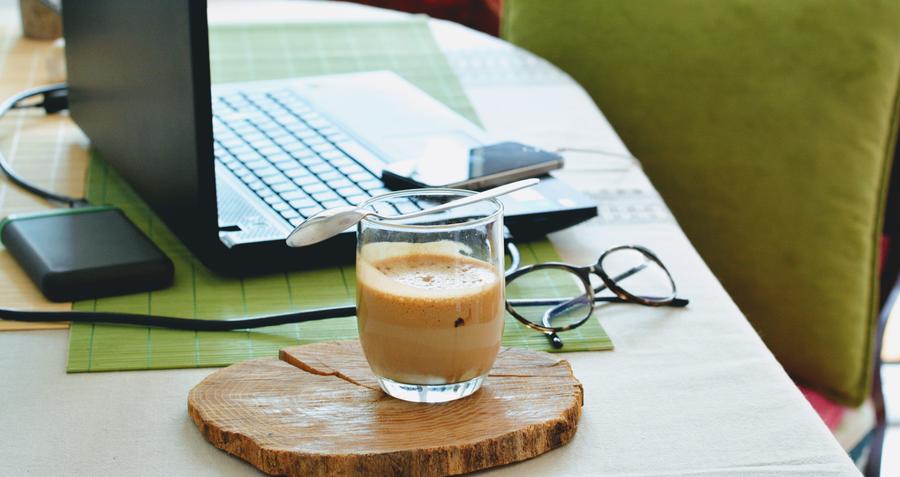For now, EnergyAustralia employees - like many others - have entered a new world of working either largely or entirely from home, combined with usual energy use during the evening and on weekends.
To assist with minimising any additional burden on your home energy consumption we have compiled a list of tips that we hope goes some way to helping you to use power in your home more efficiently.
Maintain a comfortable temperature
Heating and cooling typically comprises about 40% of household energy bills. Finding ways to address this could really save you money, including:
- Ensuring your home is as well insulated as you can make it. Insulating ceilings is a minimum, and external walls and floors, if possible. Also, close-fitting curtains/blinds on windows can really help.
- Locating and minimising draughts and air leaks. In most homes the biggest cause of added heating or cooling is air leakage, via gaps around doors, windows, floorboards, etc. These can be identified with careful use of a burning incense stick and removed or reduced with low-cost items such as weather seals, door snakes and floor coverings.
- Keeping internal doors closed to ensure you only heat or cool the rooms you spend most time in can also make a huge difference.
- Dress appropriately, especially wearing warmer clothing as the weather cools, and don’t forget your feet – cover them before cranking up the heating unnecessarily.
- Don’t sit still for lengthy periods; get up and move around periodically to keep your blood circulating effectively.
- Ensure your bedding is light enough in warm weather and thicker in cold weather to avoid running air conditioning or heating overnight.
- If you must use your heater or air conditioner, try and set it to no more than 18-20° C for heating or no less than 26° C for cooling – remembering that every degree beyond that can add 10% to your energy bill.
Get the light right
Lighting accounts for around 10% of the average household electricity bill. This can be greatly reduced by:
- Using natural light as much as possible, by choosing a comfortably light area in your home to work at, and opening blinds and curtains where suitable. As well as reducing energy bills, optimal use of natural light can also assist many aspects of our health and wellbeing.
- When the time is right, consider switching to LEDs, especially those lights that your household uses the most. As well as typically only using 10-20% of the electricity of incandescent and halogen globes, they will last 5-10 times longer, so can ‘pay back’ their purchase price within months and keep the savings coming for many years.
- Not using more artificial lighting than you need (e.g., using a desk or pedestal lamp instead of an array of ceiling lights.
- Turning off lights when you’re not in the room.
Home office equipment and other appliances
Computers, televisions and other work or entertainment appliances typically contribute to around 15% of your household electricity bill. This can be greatly reduced by:
- Where possible, adjust settings on all devices to run in economy mode, automatically minimise power consumption when not being actively used, and to turn-off after a set time (with computers set to auto-save your work).
- Computers, printers and photocopiers are all silently using power even when they are in standby mode. The solution? A smart powerboard removes the need for team members to remember to unplug machines by shutting down power to those appliances not in use.
In the kitchen
Kitchen appliances also typically total around 15% of average household energy use. Here are some things to remain mindful of:
- Every time you open the fridge or freezer door cold air escapes, so try and minimise the number and duration of openings. (Also, keep them as full as possible – a full fridge loses less cold air on each opening than a half full one).
- Check that the fridge is set no colder than 4-5° C, and the freezer 15-18° C.
- When boiling the kettle, don’t fill it with more water than you will use each time (it takes a lot of energy to boil water, so filling more than needed will waste energy).
- When cooking or heating up food, use a microwave in preference to an oven or stove top where possible.
- Don’t run your dishwasher unless it is full.
Find the best time to run appliances
We encourage customers to find out from their retailer what type of tariff they’re on – you can usually find this detail on your latest energy bill. Time-of-use tariffs have periods of much lower rates, usually overnight and weekends. Switching as much use as you can, especially of power-hungry dishwashers and washing machines, to such times can lower running costs by around 60%.
Also, those with roof top solar PV systems should ensure they know how much their system can generate during the day (which will vary across the seasons) as maximising use of your solar generation will usually be more beneficial than selling it to the grid.
We’re here to support you
Any customer looking to make contact is encouraged to use our online channels where we can provide more tailored advice depending on your home set up. This includes through our website, our social media pages and online chat.
Existing customers can also manage their energy accounts online at My Account, including viewing and paying their energy bill as well as many other options. It’s easy and free to register.

